Surviving the suburbs

We all delight in seeing a col-ourful sunbird flit into our garden to visit some flowers, especially when one of the shyer species comes through. Have you thought about why some sunbirds are common in gardens while others are so rare? And whether they will disappear as urban development increases?
These questions are important to us if we are to enjoy the presence of sunbirds and other nectarivorous birds in our gardens. But the questions are far more important to plants, because nectar-feeding birds pollinate specific plants, enabling them to produce seeds. This mutual relationship fosters plants dependent on the birds, while the birds in turn rely on the plants for food.
As cities grow, they tend to crowd out natural areas, and residential areas are often avoided by birds. If the development of towns and cities means that nectar bearing plants and nectar-feeding birds become isolated in small fragments of natural habitat, both birds and plants will suffer. However, urban areas with gardens can be made less hostile and some brave or adaptable birds will enter and use these new habitats.
Urban environments that allow nectar feeding birds to move between fragments of natural habitats are especially important in the Western Cape, for two reasons. Firstly, Cape Town and the greater Boland suburbs are interwoven with natural fynbos habitat. Secondly, more than 300 fynbos plant species depend on only five specialist nectar-feeding bird pollinator species. Thus, nectar-feeding birds play a uniquely important ecological role in the fynbos biome.
In addition to nectar specialists, there are birds such as weavers, starlings and bulbuls that feed on nectar opportunistically. A different suite of plant species is adapted to pollination by these nectar-opportunists.
Diese Geschichte stammt aus der July/August 2018-Ausgabe von African Birdlife.
Starten Sie Ihre 7-tägige kostenlose Testversion von Magzter GOLD, um auf Tausende kuratierte Premium-Storys sowie über 8.000 Zeitschriften und Zeitungen zuzugreifen.
Bereits Abonnent ? Anmelden
Diese Geschichte stammt aus der July/August 2018-Ausgabe von African Birdlife.
Starten Sie Ihre 7-tägige kostenlose Testversion von Magzter GOLD, um auf Tausende kuratierte Premium-Storys sowie über 8.000 Zeitschriften und Zeitungen zuzugreifen.
Bereits Abonnent? Anmelden

EXPLORING NEW HORIZONS
Keith Barnes, co-author of the new Field Guide to Birds of Greater Southern Africa, chats about the long-neglected birding regions just north of the Kunene and Zambezi, getting back to watching birds and the vulture that changed his life.

footloose IN FYNBOS
The Walker Bay Diversity Trail is a leisurely hike with a multitude of flowers, feathers and flavours along the way.

Living forwards
How photographing birds helps me face adversity
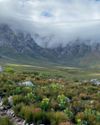
CAPE crusade
The Cape Bird Club/City of Cape Town Birding Big Year Challenge

water & WINGS
WATER IS LIFE. As wildlife photographer Greg du Toit knows better than most.
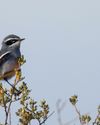
winter wanderer
as summer becomes a memory in the south, the skies are a little quieter as the migrants have returned to the warming north. But one bird endemic to the southern African region takes its own little winter journey.
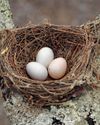
when perfect isn't enough
Egg signatures and forgeries in the cuckoo-drongo arms race
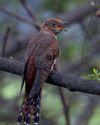
Southern SIGHTINGS
The late summer period naturally started quietening down after the midsummer excitement, but there were still some classy rarities on offer for birders all over the subregion. As always, none of the records included here have been adjudicated by any of the subregion's Rarities Committees.
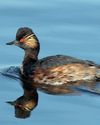
flood impact on wetland birds
One of the features of a warming planet is increasingly erratic rainfall; years of drought followed by devastating floods. Fortunately, many waterbirds are pre-adapted to cope with such extremes, especially in southern Africa where they have evolved to exploit episodic rainfall events in semi-arid and arid regions. But how do waterbirds respond to floods in areas where rainfall - and access to water - is more predictable? Peter Ryan explores the consequences of recent floods on the birds of the Western Cape's Olifants River valley.
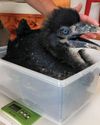
a star is born
It’s every producer’s dream to plan a wildlife television series and pick the right characters before filming.